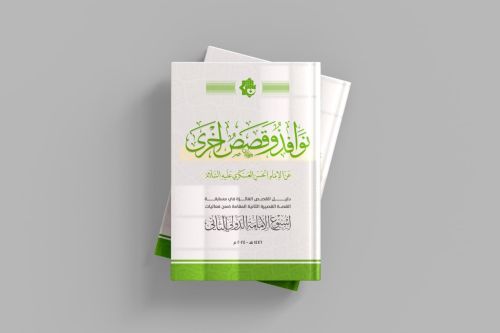

النبات

مواضيع عامة في علم النبات

الجذور - السيقان - الأوراق

النباتات الوعائية واللاوعائية

البذور (مغطاة البذور - عاريات البذور)

الطحالب

النباتات الطبية


الحيوان

مواضيع عامة في علم الحيوان

علم التشريح

التنوع الإحيائي

البايلوجيا الخلوية


الأحياء المجهرية

البكتيريا

الفطريات

الطفيليات

الفايروسات


علم الأمراض

الاورام

الامراض الوراثية

الامراض المناعية

الامراض المدارية

اضطرابات الدورة الدموية

مواضيع عامة في علم الامراض

الحشرات


التقانة الإحيائية

مواضيع عامة في التقانة الإحيائية


التقنية الحيوية المكروبية

التقنية الحيوية والميكروبات

الفعاليات الحيوية

وراثة الاحياء المجهرية

تصنيف الاحياء المجهرية

الاحياء المجهرية في الطبيعة

أيض الاجهاد

التقنية الحيوية والبيئة

التقنية الحيوية والطب

التقنية الحيوية والزراعة

التقنية الحيوية والصناعة

التقنية الحيوية والطاقة

البحار والطحالب الصغيرة

عزل البروتين

هندسة الجينات


التقنية الحياتية النانوية

مفاهيم التقنية الحيوية النانوية

التراكيب النانوية والمجاهر المستخدمة في رؤيتها

تصنيع وتخليق المواد النانوية

تطبيقات التقنية النانوية والحيوية النانوية

الرقائق والمتحسسات الحيوية

المصفوفات المجهرية وحاسوب الدنا

اللقاحات

البيئة والتلوث


علم الأجنة

اعضاء التكاثر وتشكل الاعراس

الاخصاب

التشطر

العصيبة وتشكل الجسيدات

تشكل اللواحق الجنينية

تكون المعيدة وظهور الطبقات الجنينية

مقدمة لعلم الاجنة


الأحياء الجزيئي

مواضيع عامة في الاحياء الجزيئي


علم وظائف الأعضاء


الغدد

مواضيع عامة في الغدد

الغدد الصم و هرموناتها

الجسم تحت السريري

الغدة النخامية

الغدة الكظرية

الغدة التناسلية

الغدة الدرقية والجار الدرقية

الغدة البنكرياسية

الغدة الصنوبرية

مواضيع عامة في علم وظائف الاعضاء

الخلية الحيوانية

الجهاز العصبي

أعضاء الحس

الجهاز العضلي

السوائل الجسمية

الجهاز الدوري والليمف

الجهاز التنفسي

الجهاز الهضمي

الجهاز البولي


المضادات الحيوية

مواضيع عامة في المضادات الحيوية

مضادات البكتيريا

مضادات الفطريات

مضادات الطفيليات

مضادات الفايروسات

علم الخلية

الوراثة

الأحياء العامة

المناعة

التحليلات المرضية

الكيمياء الحيوية

مواضيع متنوعة أخرى

الانزيمات
Chlamydia
المؤلف:
Kathleen Deska Pagana, Timothy J. Pagana, Theresa Noel Pagana.
المصدر:
Mosbys diagnostic and laboratory test reference
الجزء والصفحة:
15th edition , p232-234
2025-03-26
438
Type of test Blood; microscopic examination
Normal findings
Negative culture Antibodies:
Chlamydophila pneumoniae IgG: < 1:64 , IgM: < 1:10
Chlamydophila psittaci IgG: < 1:64 , IgM: < 1:10
Chlamydia trachomatis IgG: < 1:64 , IgM: < 1:10
Nucleic acid detection: negative
Test explanation and related physiology
There are many Chlamydia species that cause various diseases within the human body. Chlamydophila psittaci causes respiratory tract infections, headache, altered mentation, and hepatosplenomegaly. It occurs as a result of close contact with infected birds. Chlamydophila pneumoniae, another species, causes pneumonia. Chlamydophila trachomatis infection is probably the most frequently occurring sexually transmitted disease in developed countries. Infections of the genitalia, pelvic inflammatory disease, urethritis, cervicitis, salpingitis, and endometritis are most common. C. trachomatis may also infect the conjunctiva, pharynx, urethra, and rectum and cause lymphogranuloma venereum. The second serotype of C. trachomatis causes the eye disease trachoma, which is the most common form of preventable blindness. A third serotype produces genital and urethral infections different from lymphogranuloma. Most women colonized with Chlamydia are asymptomatic.
Tests can be performed on the blood of infected patients or swabs from the conjunctiva, nasopharynx, urethra, rectum, vagina, or cervix. Urine, seminal fluid, or pelvic washing can be used in culture and in direct identification of Chlamydia. Early identification of infection enables sexual partners to seek testing and/or treatment as soon as possible and reduces the risk of disease spread. Prompt treatment reduces the risk of infertility in women .
Interfering factors
• Women presently having routine menses
• Patients undergoing antibiotic therapy
Procedure and patient care
Before
* Explain the procedure to the patient.
During
• For Chlamydia antibody testing, collect venous blood in a red-top tube. Acute and convalescent serum should be drawn 2 to 3 weeks apart.
• Sputum cultures are used to check for C. psittaci respiratory infections.
• Chlamydia can be tested by direct nucleic acid identification or culture. A conjunctival smear is obtained by swabbing the eye lesion with a cotton-tipped applicator or scraping with a sterile ophthalmic spatula and smearing on a clean glass slide.
• Note the following procedural steps for cervical culture:
1. The patient should refrain from douching and bathing in a tub before the cervical culture is performed.
2. The patient is placed in the lithotomy position.
3. A nonlubricated vaginal speculum is inserted to expose the cervix.
4. Excess mucus is removed using a cleaning swab.
5. A second sterile, cotton-tipped swab is inserted into the endocervical canal and moved from side to side for 30 seconds to obtain the culture.
6. The swab is then placed into an appropriate transport tube for testing.
• Note the following procedural steps for urethral culture:
1. The urethral specimen should be obtained from the man before voiding within the previous hour.
2. A culture is taken by inserting a thin sterile swab with rotating movement about 3 to 4 cm into the urethra.
• Note the following procedural steps for a urine specimen:
1. The patient should not have urinated for at least 1 hour before specimen collection.
2. The patient should collect the first portion (first part of stream) of a random voided urine into a sterile, plastic, preservative-free container.
3. Transfer 2 mL of urine into the urine specimen collection tube using the disposable pipette provided. (The correct volume of urine has been added when the fluid level is between the black fill lines on the urine tube.)
• Note that these tests are performed by a physician, nurse, or other health-care provider in several minutes. Tell the patient that these procedures cause minimal discomfort.
After
• Treat patients who have positive smears with antibiotics. Tell affected patients to have their sexual partners examined.
Abnormal findings
Chlamydia infection
 الاكثر قراءة في التحليلات المرضية
الاكثر قراءة في التحليلات المرضية
 اخر الاخبار
اخر الاخبار
اخبار العتبة العباسية المقدسة

الآخبار الصحية















 "المهمة".. إصدار قصصي يوثّق القصص الفائزة في مسابقة فتوى الدفاع المقدسة للقصة القصيرة
"المهمة".. إصدار قصصي يوثّق القصص الفائزة في مسابقة فتوى الدفاع المقدسة للقصة القصيرة (نوافذ).. إصدار أدبي يوثق القصص الفائزة في مسابقة الإمام العسكري (عليه السلام)
(نوافذ).. إصدار أدبي يوثق القصص الفائزة في مسابقة الإمام العسكري (عليه السلام) قسم الشؤون الفكرية يصدر مجموعة قصصية بعنوان (قلوب بلا مأوى)
قسم الشؤون الفكرية يصدر مجموعة قصصية بعنوان (قلوب بلا مأوى)


















